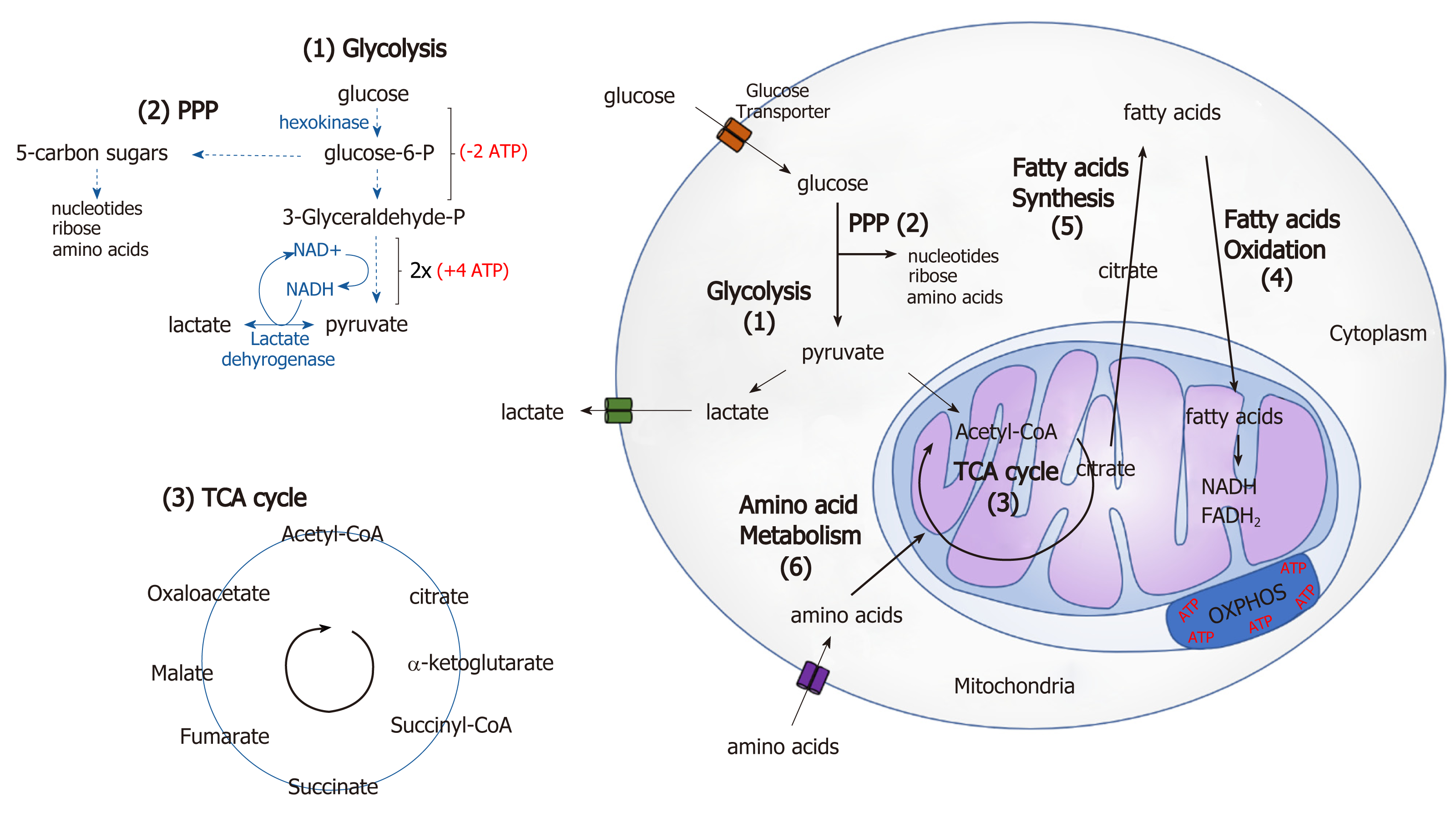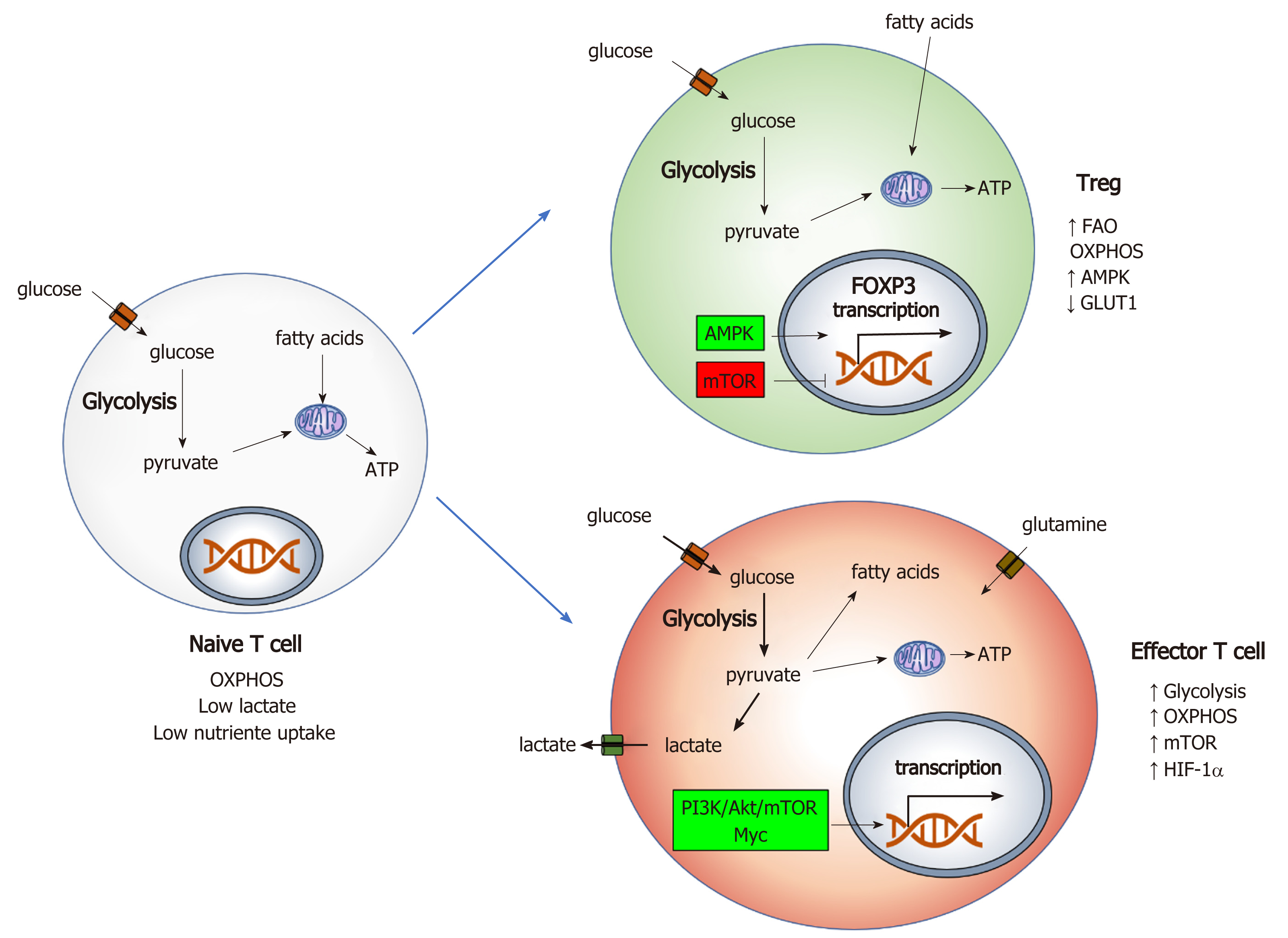Copyright
©The Author(s) 2019.
World J Transplant. Jun 28, 2019; 9(2): 27-34
Published online Jun 28, 2019. doi: 10.5500/wjt.v9.i2.27
Published online Jun 28, 2019. doi: 10.5500/wjt.v9.i2.27
Figure 1 Six main metabolic pathways relevant for immune cell function.
(1) Glycolysis is a process that occurs in the cytoplasm and involves conversion of glucose into pyruvate, (3) Which can either enter the tricarboxylic acid (TCA) cycle or be transformed into lactate and secreted. (2) The pentose phosphate pathway, is parallel to glycolysis and generates ribose for nucleotides, amino acids and nicotinamide adenine dinucleotide phosphate (NADPH), which is important for the synthesis of fatty acids and production of lipid ligands. (4) Fatty acid oxidation is a mitochondrial dependent aerobic process which consists on breaking down fatty acids into Acetyl-CoA units, generating NADH and FADH2, and driving ATP production from the E. (5) Fatty acid synthesis is a complex cytoplasmic process that is regulated by Acetyl-CoA, NADPH and fatty acid synthases to generate fatty acids. (6) Amino acid metabolism is very diverse, also important for cell growth and protein biosynthesis, as a consequence of the large number of different amino acids, which can feed different the carbon skeletons into pyruvate, acetyl CoA, and the citric acid cycle, which enter the TCA cycle. TCA: Tricarboxylic acid; PPP: Pentose phosphate pathway; OXPHOS: Oxidative phosphorylation.
Figure 2 Main metabolic pathways in T cells – Naïve T cells are characterized by lower energy requirement, low glucose uptake and mainly use oxidative phosphorylation for energy generation.
Once T cells are activated there is a switch in metabolic state which is accompanied by changes via the PI3K/Akt/mTOR axis and Myc. Increase in glycolysis and oxidative phosphorylation (OXPHOS) are characteristic in activated effector T cells, increase in glutamine uptake and fatty acid synthesis is also observed. In contrast, Tregs have metabolic features comparative to naïve T cells, producing energy by lipid oxidation and OXPHOS in mitochondria for the generation of adenosine triphosphate[7,42,43]. ATP: Adenosine triphosphate; AMPK: Adenosine monophosphate activated protein kinase; OXPHOS: Oxidative phosphorylation; FAO: Fatty acid oxidation.
- Citation: Domínguez-Amorocho O, Takiishi T, da Cunha FF, Camara NOS. Immunometabolism: A target for the comprehension of immune response toward transplantation. World J Transplant 2019; 9(2): 27-34
- URL: https://www.wjgnet.com/2220-3230/full/v9/i2/27.htm
- DOI: https://dx.doi.org/10.5500/wjt.v9.i2.27














